Edible marijuana includes any type of CBD or THC food or drinks that you can ingest. You can make medical cannabis edibles at home and there are also gummies, candies, brownies, and other edible cannabis products at dispensaries in legal states. Edibles often take longer to kick in, but they produce a relaxing body high that is helpful for some migraine sufferers.
What is a migraine
Many of us have experienced mild headache pain at some point in our lives; however, a sizeable percentage of the population is plagued by frequent and severe headaches that unfortunately disrupt their daily lives. These types of headaches are typically referred to as migraines. A migraine is considered one of the top ten most debilitating illnesses by the World Health Organization, and it’s estimated that twelve percent of Americans, or over 37 million of the adult population in our country alone are chronic migraine patients.
Women are particularly susceptible to the illness, estimating that approximately one in five women will experience migraines. Many migraine sufferers feel the debilitating impacts of their chronic pain in their social and professional lives. Unfortunately, migraine treatments are not always practical due to the unknown nature of their exact cause.
Causes
Although the exact cause of a migraine headache pain isn’t always easy to pinpoint, some of the most common reasons that we get migraine headaches are:
- dehydration
- consuming alcohol
- poor posture
- tight muscles
- stress
- eye strain
- lack of food
- over/underuse of caffeine
- sinus congestion/allergies
- medication overuse
- high blood pressure
Symptoms
Migraines come in four stages: prodrome, aura, attack, and post-drome, although not all migraine sufferers go through all steps.
Prodrome
The day before a migraine, you may notice changes in the body that warns of a migraine, including:
- Constipation
- Mood swings
- Food cravings
- Neck stiffness
- Increased urination
- Fluid retention
- Frequent yawning
Aura
Auras are reversible nervous system symptoms and can occur before or during a migraine episode. They are usually vision-related, but not always. Each sign usually begins gradually, then builds up and can last up to an hour.
Migraine auras may include:
- Visual phenomena- shapes, bright spots, or flashes of light
- Temporary vision loss
- Tingling sensations in limbs
- Weakness or numbness in the face/body
- Difficulty speaking
Attack
A migraine attack can range from four to seventy-two hours, depending on the treatment method. The frequency of migraines occurrence varies with each person.
During a migraine, you could experience:
- Pain on one or both sides of the head
- Throbbing or pulsing facial pain
- Light and Sound sensitivity
- Nausea and vomiting
Post-drome
After a migraine headache, you could feel confused and exhausted for a short period. Many people report feeling dizzy as well.
Consulting a Doctor
Visit a healthcare provider immediately if you have any of the following symptoms that could indicate a serious health condition:
- An abrupt, severe headache
- Headache with fever, confusion, seizures, double vision, numbness or weakness within the body, which could be a sign of a stroke
- Headache after an injury
- A reoccurring headache made worse by coughing, straining, or a sudden movement
- New headache pain after the age of fifty
Marijuana for headache relief
Although typically placed into Indica, Sativa, or Hybrid categories, we now understand that those classifications have little to do with a medical cannabis strain’s psychoactive properties. THC, CBD, and other minor cannabinoids play an essential role, but terpenes also work behind the scenes to help provide a particular strain’s effects.
So far, there has been limited research into terpenes and their relation to migraine headaches and the human endocannabinoid system because recreational cannabis is federally illegal. But one cannabis science study found that the terpenes, myrcene, and caryophyllene, have medicinal benefits that can ease migraine attacks and potentially reduce migraine frequency. Discussing medical cannabis use with a trusted healthcare provider could help if you’ve exhausted other prescription medication options.
Benefits
With many migraine sufferers finding no relief in prescription migraine medications, some people have turned to the cannabis plant and its ability to treat migraines by easing the pain caused by light and sound sensitivity. Based on emerging peer-reviewed studies, the scientific community is beginning to understand how the active chemicals in certain cannabinoids can interfere with the pathways that trigger extreme pain, reducing their severity or even preventing the headache in some cases. These clinical trials represent a promising future for cannabis medicine as an effective treatment option for those managing symptoms of pain relief from the cannabis flower.
Potential Risks
Edibles carry similar risks as other THC cannabis oil. The potential risks of medical marijuana include:
- Nausea and vomiting
- Paranoia
- Anxiety
- Increased heart rate
- Dry or Red eyes
- Slowed cognitive function
- Extreme fatigue
Marijuana edibles for medical use do not produce any other known severe side effects. Some people fear that it might cause too intense of a high, and others have reservations about its legality, considering that marijuana is federally illegal in the United States. It’s crucial to brush up on local laws and choose a high-quality product for migraine treatment and pain relief.
If you are on coagulants or blood thinners, you may want to remain cautious with edibles because THC can significantly slow down blood clotting. Remember to discuss using medical marijuana for migraine prevention with your primary care physician, especially when if you are scheduled for an upcoming surgery or procedure.
Edible Dosage
When trying edibles for their medicinal properties, begin with a low dose of your edible, then increase the dose-dependent on comfort. If you’re unsatisfied with the desired effects after the first use, you can exponentially increase the dose. You can also boost your dosage of cannabis products slowly over a few weeks to reduce discomfort and ensure safe cannabis consumption.
Research and Trials
Research into medical cannabis as an effective migraine treatment is in the early stages, and further research is needed. However, The Journal of Pain published a 2019 study claiming that the severity of headache disorders and migraine pain was reduced by around 50 percent when individuals participated in medicinal cannabis use.
Another medically reviewed study in Pharmacotherapy found that 40 percent of people who began using medical cannabis treatment for migraines experienced a significant decrease in the frequency of migraine attacks.
Anecdotal evidence published by a medicinal cannabis cohort in a study by Neurology reported that 42 percent of surveyed patients saw a decrease in their migraine headache frequency.
According to medical research published by J headache pain on jpain.org: “Inhaled cannabis reduces self-reported headache and migraine severity by approximately 50%. However, its effectiveness appears to diminish across time and patients appear to use larger doses across time, suggesting tolerance to these effects may develop with continued use.”
Top Strains for Migraine Relief
These six medical cannabis strains are known to ease the pain for migraine sufferers and enhance their quality of life.
OG Kush
- OG Kush originated on the West Coast and was first grown in Florida
- It is a popular strain with 18 percent THC and zero CBD content
- It’s a cross between Chemdawg, Lemon Thai, and the Hindu Kush
- OG Kush is a balanced hybrid breed and an excellent strain
- The flavor is sweet citrus, while the aroma of OG Kush is piney with a strong diesel smell.
- It has an average of eight to nine weeks of flowering time indoors
- OG Kush is used to treat stress, depression, anxiety, nausea, chronic pain relief and appetite loss
- Users say OG Kush produces a euphoric, happy high leaving you carefree, hungry and will provide symptom relief from acute pain
Skunk No. 1
- Skunk No. 1 originated in California and later was brought to the Netherlands.
- It has 17 percent THC and 1 percent CBD
- Its parent strains are Afghani, Acapulco Gold, and Colombian Gold
- It is a balanced Hybrid breed
- The flavor aroma is overwhelming and skunky with a hint of tobacco aspects
- It has an average of nine weeks of flowering time indoors
- This marijuana is used to treat chronic illnesses, depression, anxiety, and appetite loss
- It produces an uplifting, creative cerebral high that leaves you relaxed and hungry
Cannatonic
- Cannatonic originated in Spain, later cross-bred in US government labs
- It is known as the CBD Queen with 9 percent CBD and 4 percent THC
- It’s a cross of MK Ultra and G13 Haze
- It is a balanced 50/50 Hybrid
- The flavor is sweet citrus while the aroma is earthy
- It has an average of eleven weeks of flowering time indoors
- This strain is popular for medicinal cannabis use to treat muscle spasms, migraines, fatigue, and chronic pain
- It produces a powerful, uplifting, and energetic high, leaving you extremely relaxed
Harlequin
- Harlequin originates from Columbia, Switzerland, and Thailand
- It is a CBD strain with nine percent CBD and five percent THC
- It has many parent strains: Colombian Gold, a Nepali pure Indica strain, and Thai and Swiss landrace Sativa strains
- It has an earthy, musky aroma with mango flavors
- It’s used for medical reasons to treat chronic pain, inflammation, multiple sclerosis, and ongoing anxiety
- This one provides relief from medical conditions while still maintaining an energetic, focused high
Blue Dream
- Blue Dream originated in California, on the West Coast
- It has 18 percent THC and low CBD
- It’s a cross of Blueberry and Haze
- Blue Dream is a Sativa dominant hybrid strain
- Flavor and aroma boast sweet berries
- It has an average of 65 days of flowering time
- This strain is used to treat nausea, migraine pain, depression, chronic pain, and for reducing inflammation
- Blue Dream produces psychotropic effects that are relaxing and balanced
White Widow
- White Widow originated in the Netherlands
- It has a lower 15 percent THC and one percent CBD
- It’s a cross between Brazilian landrace Sativa and South Indian Indica
- It’s a hybrid breed
- The flavor of White Widow is spicy and herbal with an earthy aroma
- The White Widow strain will make you feel euphoric, energetic, social, and help relieve migraine pain
Migraine FAQs
Can CBD Edibles for Migraines also be used for dogs with CBD oils?
Yes, the best cbd oils for dogs can also be used to treat migraines in dogs. CBD has the potential to help with migraine pain and may also provide relief for dogs experiencing similar discomfort. CBD edibles can be a convenient and effective way to administer CBD to pets.
What’s the difference between a headache and a migraine?
While some people use these terms to mean the same thing, there are significant differences between migraine and headaches.
Migraine is a severe brain disease. It can be clinically diagnosed, and researchers have extensively studied the changes that occur in the nervous system during a migraine attack. Migraine attacks can be debilitating and often include other symptoms.
Although scientists understand the changes that occur in the nervous system during a migraine attack, they can’t be seen on scans or in the blood. Doctors, therefore, diagnose migraine based on a specific set of symptoms rather than on particular test results.
Headache is a broad term to describe head pain. Although it is a common migraine symptom, not all headaches fall in the migraine category.
Is Sativa or indica better for migraines?
According to The Journal of Headache and Pain, which type of medical cannabis to use depends on the root cause of your headache. Here’s what they had to say:
“When comparing headache and migraine symptoms to non-headache groups, Indica strains were preferred in insomnia/sleep disorders group, Sativa strains in the mental health condition/PTSD group, and Hybrid strains were still preferred in the gastrointestinal disorder/Crohn’s Disease group. “
What type of CBD oil works for migraines?
Full-spectrum CBD oil is typically helpful in reducing headaches and migraine prevention. THC is a cannabinoid that can sometimes enhance migraine attacks so a pure, organic cannabidiol CBD oil is the best option. An exception can be vaping or smoking medical marijuana because as a consumption method it can irritate blood vessels and trigger allergies which can cause a migraine attack.
Summary
Research into medical cannabis continues to gain momentum, but there is still a lot that we don’t know. Many use weed for severe headaches and chronic migraine relief, and some scientific evidence backs that up as a good option. As with any new health treatment, we recommend researching adverse effects and health benefits of medicinal cannabis compounds, seeking professional medical advice, and first checking your state’s medical marijuana laws.

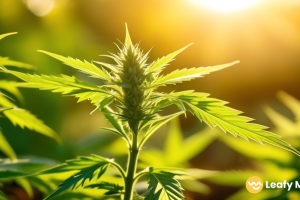
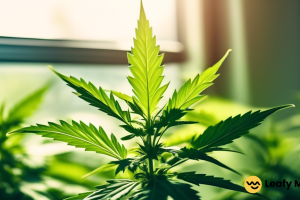
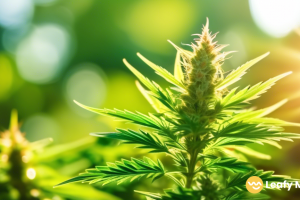




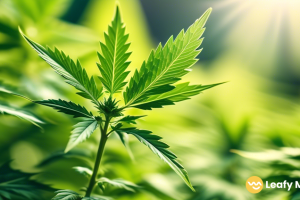
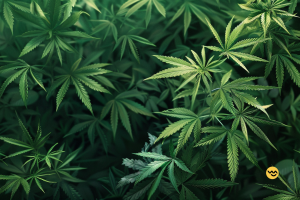
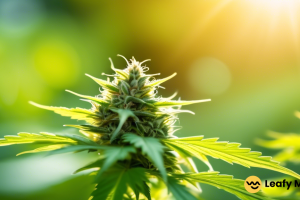
Leave a Reply